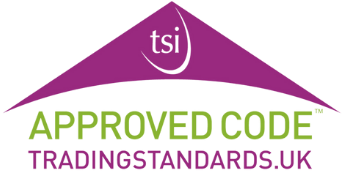You usually need a mortgage to buy a house.
It can be difficult to raise enough money without one.
It’s thus crucial that you complete the mortgage approval process correctly.
It’ll allow you to buy your dream home.
We’ve outlines the full mortgage approval process in the UK below.
1. Find the type of mortgage you need
Your first step is to find the type of mortgage that you need. Your circumstances will determine which one is best.
The main types of mortgages to choose from include:
- Buy-to-let mortgage
- Guarantor mortgage
- Help-to-Buy mortgage
- Joint mortgage
- Standard variable rate mortgage
- 95% mortgage.
These are the most common examples. You can often get these for both residential and commercial properties.
In this blog, we’re assuming that you’re looking to get a mortgage for a residential home (which is different from a buy-to-let mortgage).
2. Choose a provider
When the time arrives, you have dozens of banks to choose from to get a mortgage.
Some of the most well-known examples include:
- Lloyds
- Bank of Scotland
- HSBC.
But you’ll also find many smaller banks offering unique products for rare scenarios.
Once again, a mortgage adviser and/or broker can be useful here.
They’ll know what products are available and may already have good relationships with the banks.
Alternatively, you can use a comparison website. This allows you to put in what you’re looking for and look at the rates on offer.
You can also look at each bank’s website for their products and terms.
3. Gather all your documents
You can’t apply for a mortgage without the necessary documents. You should thus gather all of these in advance. The main examples are:
- Proof of identity
- Proof of address
- Bank statements
- Proof of employment
- Credit score and history.
You can avoid delays in the mortgage approval process by having these ready to hand over.
A solicitor can help you gather the necessary information if you are struggling.
4. Get a mortgage in principle
At this point, you should get a mortgage in principle.
This gives you a clear offer from the bank about how much they’ll lend you.
This avoids confusion and makes it extremely easy for you to set your budget.
You can get a mortgage in principle on your bank’s website. They’ll usually have it clearly labelled where you need to click.
Once you click on the button and fill in the information, you often get your mortgage in principle within a few days. This makes you a credible buyer for sellers.
5. Get an offer accepted on the house you’re buying
You then need to make an offer on the house you’d like.
Combine your deposit with the mortgage in principle to determine how much you can afford.
There’s no point in offering more than this because the bank won’t increase the amount they lend you.
Getting your offer accepted may involve negotiation. It could take a couple of weeks of going back and forth with the owner.
You should supplement this with research to see what a ‘typical’ property of that size sells for in the area. You can thus be sure you’re getting a great deal.
6. Get a survey completed
Once your offer is accepted, it’s time to complete a property survey.
Many banks make this compulsory if you want them to lend you a mortgage. Speak to them to find out if that’s the case.
Either way, getting a survey done is also in your best interest. This enables you to spot problems with the house and amend your price.
It ensures you don’t get a terrible deal costing you thousands of pounds.
The survey is usually completed within one week.
7. Apply for a formal mortgage offer
Once you have your survey results and you’ve found a house to buy, it’s time to apply for a formal mortgage offer. Your solicitor can help you with this.
The process is much the same as applying for a mortgage in principle.
You must give details about yourself, such as your identity and address.
You’ll also need to give a clear overview of your financial history. Examples include your credit score, income, and the time you’ve been in your job.
Your mortgage lender often wants details about the survey completed on the house, too. They’ll then move onto the final step…
8. Wait for your lender to give a mortgage valuation on the property
Your lender will not send you an official mortgage offer until they give a valuation on the property.
This is to decide if they agree with the value you’ve agreed to buy it for.
Put simply, the lender wants to feel confident that you’ve settled on a fair price.
Otherwise, you may struggle to sell it for the same amount further down the line. This would push you into mortgage arrears.
If they disagree about the house value, they can reduce how large of a mortgage they’ll give you.
It’s then up to you to make up the extra money – or perhaps renegotiate.
9. Receive your mortgage offer
Once you’ve followed all the steps listed above, you’ll get a written mortgage offer from the lender.
This money should arrive in your account by the exchange of contracts. That’s the day you’ll send the full funds to the seller.




















